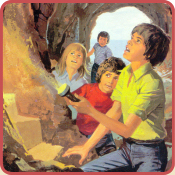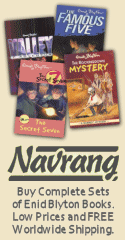
How John Got His Ducklings

Book Details...
First edition: 1966
Publisher: Brockhampton Press
Illustrator: Jacques Fromont
Category: John and Mary
Genre: Family
Type: Short Story Books
Publisher: Brockhampton Press
Illustrator: Jacques Fromont
Category: John and Mary
Genre: Family
Type: Short Story Books
On This Page...
Children like to play on farms so Enid Blyton has supplied one for John and Mary to visit. It couldn't be more convenient because the place is next to their own home, plus they have guaranteed access seeing it belongs to their uncle. The children enjoy playing about in their uncle's paddocks and they especially love mingling with the animals and birds. John develops the craving to have a few pets of his own but Uncle Tom won't pass any on because of the belief that his young nephew might forget to feed them or cater to their other needs. Once the bloom of owning an animal wears off it can sometimes happen that a child turns his or her attention to more urgent pursuits; so Uncle Tom's attitude could be classed as 'responsible,' rather than 'mean.'
John's unhappy about this because he'd very much like to have a few little chicks for himself. Mary could help him to look after them but his uncle's adamant so, as a substitute, John helps to feed the livestock and assists in other ways; but he still nurses the yearning for a pet of his very own.
One day when Jim the yard-man begins transferring hay to the barn, John who has his own toy cart and wooden steed decides to help. He trundles them out and, with Mary's help, they fill the miniature cart with hay. John then picks up a string halter tied to his horse's head and starts pulling it to the barn but -
Dear me!
His horse's platform collides with a stone and the front wheel comes off. A sad thing to happen indeed. Whilst Mary wheels the cartful of hay off to stow it in her uncle's barn, John takes the crippled horse to Jim who says he'll repair it - but not while they're haymaking because he just hasn't got the time. Fair enough, so the children run off home to their dinner. What happens next is that John's cart, which Mary has inadvertently left in the barn, disappears completely from their minds.
A few weeks pass and Jim finally gets to repair John's horse, which means the children then have to figure out where the cart is. No one's seen it anywhere so John sets off to hunt for it and his uncle tells the boy to look out for any eggs while he's searching because he thinks one of the ducks is laying away and may have a nest somewhere.
"You can have the eggs for yourself if you find any," Uncle Tom tells the boy.
Eureka! John suddenly remembers where his cart could be - Mary must have left it in the barn when they were helping to store hay. The children rush off to the outbuilding and sure enough they find it there, and would you believe - a duck has built her nest in the cart!
So, how does John get his ducklings?
The trolley holding John's horse lost its front wheel. 'Front wheel' means it was a lone one placed in the middle of the board rather than being one of two.
This version of the tale is quite heavily abridged. It was originally in 'Sunny Stories' mag, but also appeared in 'Enid Blyton's Sunny Story Book' with the children living on their father's farm. They carted 'straw' instead of hay. The wooden horse's name was 'Dobbin' (naturally), and a wheel didn't come off - instead the horse's wooden platform cracked in half. Also the cart was left out in a field rather than in their uncle's barn
Hedgehogs are mainly nocturnal but occasionally they can be seen wandering around in the daytime. A two-page picture shows the children with their horse and cart in a field where there's a hedgehog, a jumping frog, a steepled church in the distance, and Jim on an enormous cart of hay.
How to compare artists is difficult because in this version there must be at least twenty colour illustrations seeing it's more of a picture book. In the Brockhampton Press edition there's a grand total of one, so I guess this version has to win handsomely in the artwork stakes, despite the earlier printing's image being sketched by that doyen of Blyton artists - Eileen Soper (and a very attractive one it is).
The tales in these books are fairly transparent so nothing of great importance is concealed in any strict sense.








